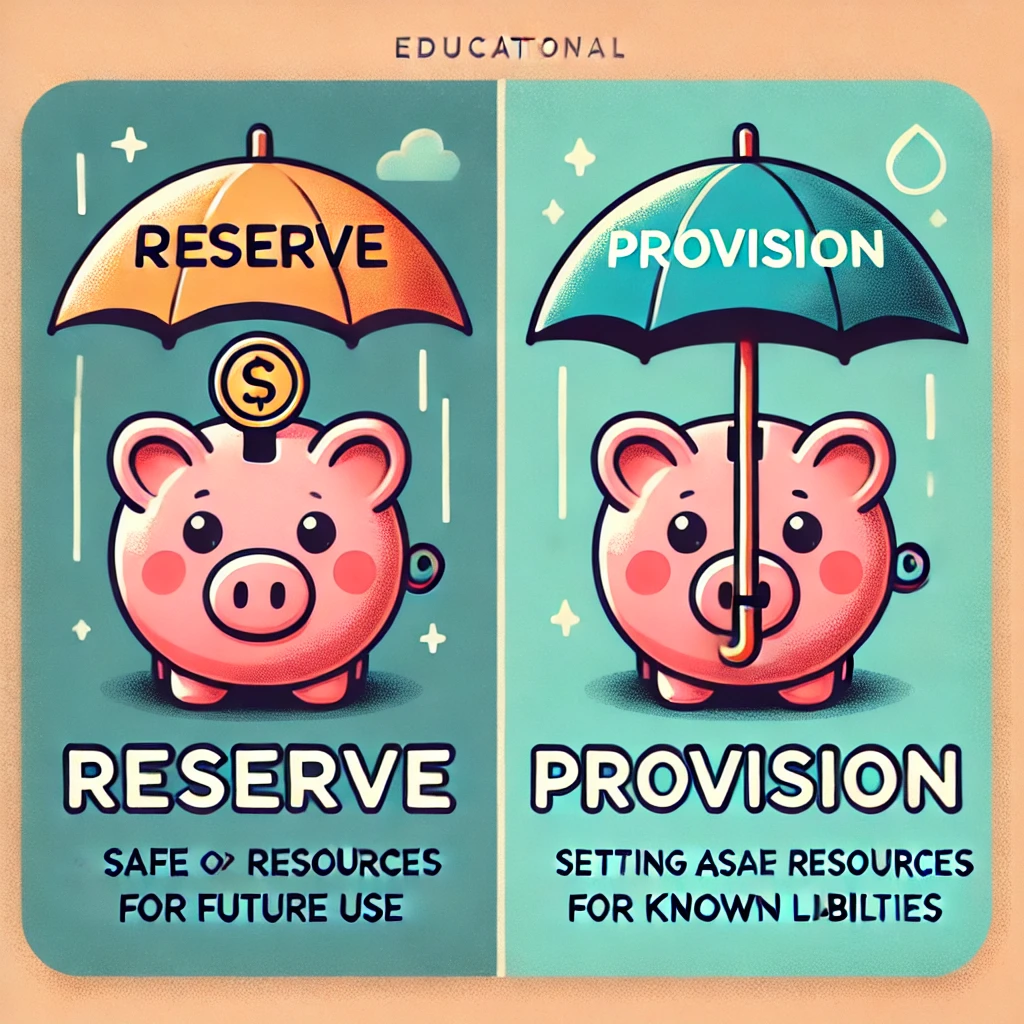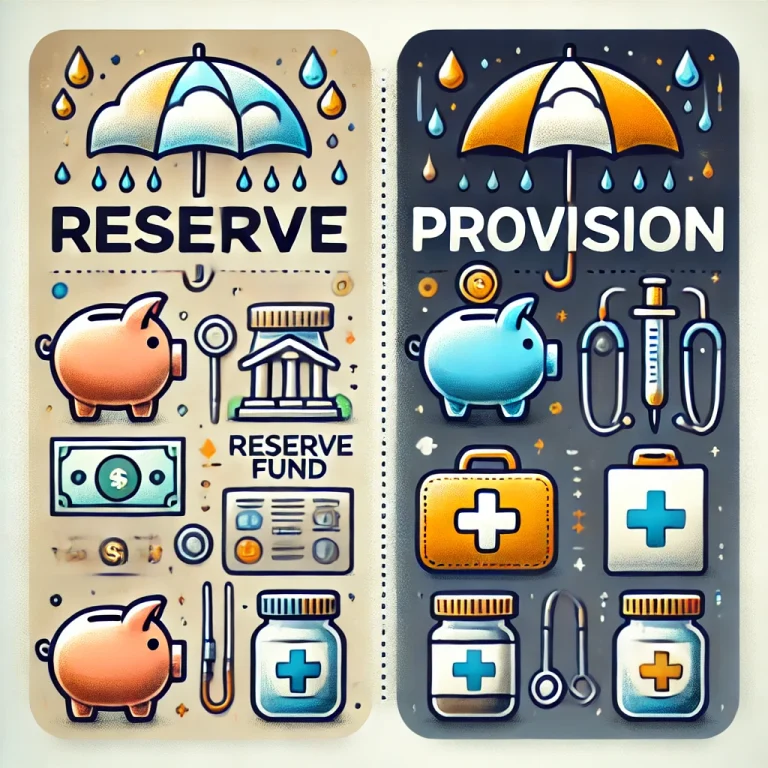Reserve and provision are the basic concepts of accounting, through which businesses can allocate financial resources prudently and by accounting standards. Reserves and provisions are two financial safeguards that differ in purpose, usage, and financial implications. The article will discuss the differences, definitions, types, and applications of reserves and provisions to help students and business professionals understand how these concepts work within financial statements.
What is the Difference Between Reserve and Provision?
The main difference between reserve and provision lies in their purposes. Although both involve the setting aside of money, a reserve is an allocation of profit for strengthening financial health or meeting future capital needs, while a provision is specifically for anticipated losses or liabilities.
Reserves are created on profit for the enhancement in value of the company and for future growth, whereas provisions are compulsory reductions to profit on known liabilities. For example, depreciation on plant and machinery and the amount of bad debts.
| Feature | Reserve | Provision |
|---|---|---|
| Purpose | Strengthens financial position or funds expansion. | Covers specific anticipated expenses or losses. |
| Source | Allocated from profit, optional. | Mandatory, deducted from current profit. |
| Usage | General business purposes, dividends, etc. | Covers specific liabilities (e.g., bad debts, taxes). |
| Accounting Treatment | Shows as a part of retained earnings. | Treated as a liability on the balance sheet. |
| Examples | Capital reserve, revenue reserve. | Provision for depreciation, provision for bad debts. |
What is Reserve?
Reserves are the profit retained in the business for increasing financial stability or financing expansion and future investments. Instead of keeping against a particular liability, the reserves strengthen the balance sheet of the company and imply retained earnings.
Types of Reserves
- Capital Reserve: This is brought about by capital gains or non-operating earnings in the form of increased asset valuation or when fresh shares are issued at a premium. It is used for long-term activities, such as buying fixed assets and debt redemption, and is not to be used to pay dividends.
- Revenue Reserve: These come from operating profits and retained earnings. It is mostly used for the payment of dividends and general expenses of the business.
- General Reserve: Given out from the earnings without particular use. It increases the financial position and is always capable of solving some future unspecified needs.
- Specific Reserve: This reserve is given out for a particular use. An example include employee bonuses, and research and development, among others. The funds are utilized only for the specified purpose.
Fun Fact: The use of reserves can give a favorable impression of a company’s financial health, which may positively affect its credit rating.

What is Provision in Accounting?
A provision is uncertain regarding the timing or amount but is recognized for accrued accounting. Provisions are linked to expenses or losses that are sure to arise; these are either in terms of low inventory deductions from asset values or customer returns and thus are directly connected with obtaining the right financial reporting.
Needs for Provision in Business
- Compliance with Accounting Standards: Provisions ensure that expenses are matched with the period to which they relate, and reporting is transparent.
- Anticipating Business Risks: Provisions such as warranties or tax liabilities are essential for anticipating losses and protecting cash flow.
- Maintaining Accurate Financials: Provisioning prevents profit overstatement by accounting for potential liabilities as early as possible.
General Rules in Creation of Provision
Provisions are governed by accounting standards (such as IAS 37) that outline when and how they should be recognized. Key guidelines include:
- Probability of Occurrence: A provision should be made only if there is a high possibility the expense will arise.
- Reasonable Estimation: The amount of provision must be reasonably estimated on available data.
- Relevant Financial Year: Provisions must be created in the financial year the expense or liability is identified, matching the period in which the liability arises.
Understanding the difference between reserve and provision is very important for solid financial planning. Reserves boost a company’s balance sheet, while provisions prepare it in advance for known expenses or losses. Distinguishing between these two concepts allows firms to maintain financial accuracy as well as stability.
Reserve and Provision FAQs
What are the types of reserves in accounting?
There are various types, including capital reserve, revenue reserve, general reserve, and specific reserve, each serving different purposes in financial management.
Why is a provision considered a liability?
Provisions represent expected future obligations, which decrease company assets over time, making them liabilities in accounting.
Can a provision be converted into a reserve?
No, provisions are for specific liabilities, whereas reserves are generally unrestricted funds retained for strengthening finances or expansion.
How do reserves impact dividends?
Revenue reserves may be used to declare dividends, whereas capital reserves are often restricted from such uses.
What is the main difference between reserve and provision in accounting?
Reserves are for future growth or risk mitigation, while provisions are set aside to cover known or estimated liabilities.


